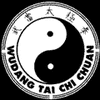Full details of the following criteria for improving form can be found in Dan Docherty's book Complete Tai Chi Chuan
1.Correct Posture
The key point here is that the back is straight (whether or not it is upright)
2.Correctness of Stance
Alignment of the knee and foot is crucial.
3.Distinguishing Yin and Yang
Distinguishing Yin and Yang can be done in a number of ways. This concept can be appreciated most
clearly when considering weight distribution. For example in the front stance the front leg bears most of the weight and is therefore full, substantial or Yin. The rear leg is empty, void or Yang. In the back stance, the front leg is empty, void or Yang, while the rear leg is full, substantial or Yin.
4.Co-ordinated movement
The aim is for all parts of the body to start and finish a movement together.
5.Achieving Smoothness
Here the aim is to achieve a smooth transition from one technique to another. The smooth transition from one technique to another is accomplished by shifting the body or stance and thus leading the limbs and/or by moving to almost an extreme in one direction until we feel that the hips and limbs are like coiled springs; then we can use this feeling by uncoiling in the opposite direction, as in Snake Creeps Down.
6.Intent and Focus
Intent or Yi should be expressed not just through the physical movements, but also in the eyes. Practitioners should be looking at where they, and therefore their hands are going. At all times the hands and feet are engaged in applying defensive or counter-attacking moves, and the eyes should express the intent behind these movements.
7.Balanced Turning and Stepping
Good balance can be achieved through sinking and keeping the centre of gravity low.
8.Relaxation and softness
9.Aesthetically pleasing. 10. Contain Martial Spirit.
The key point here is that the back is straight (whether or not it is upright)
2.Correctness of Stance
Alignment of the knee and foot is crucial.
3.Distinguishing Yin and Yang
Distinguishing Yin and Yang can be done in a number of ways. This concept can be appreciated most
clearly when considering weight distribution. For example in the front stance the front leg bears most of the weight and is therefore full, substantial or Yin. The rear leg is empty, void or Yang. In the back stance, the front leg is empty, void or Yang, while the rear leg is full, substantial or Yin.
4.Co-ordinated movement
The aim is for all parts of the body to start and finish a movement together.
5.Achieving Smoothness
Here the aim is to achieve a smooth transition from one technique to another. The smooth transition from one technique to another is accomplished by shifting the body or stance and thus leading the limbs and/or by moving to almost an extreme in one direction until we feel that the hips and limbs are like coiled springs; then we can use this feeling by uncoiling in the opposite direction, as in Snake Creeps Down.
6.Intent and Focus
Intent or Yi should be expressed not just through the physical movements, but also in the eyes. Practitioners should be looking at where they, and therefore their hands are going. At all times the hands and feet are engaged in applying defensive or counter-attacking moves, and the eyes should express the intent behind these movements.
7.Balanced Turning and Stepping
Good balance can be achieved through sinking and keeping the centre of gravity low.
8.Relaxation and softness
9.Aesthetically pleasing. 10. Contain Martial Spirit.

